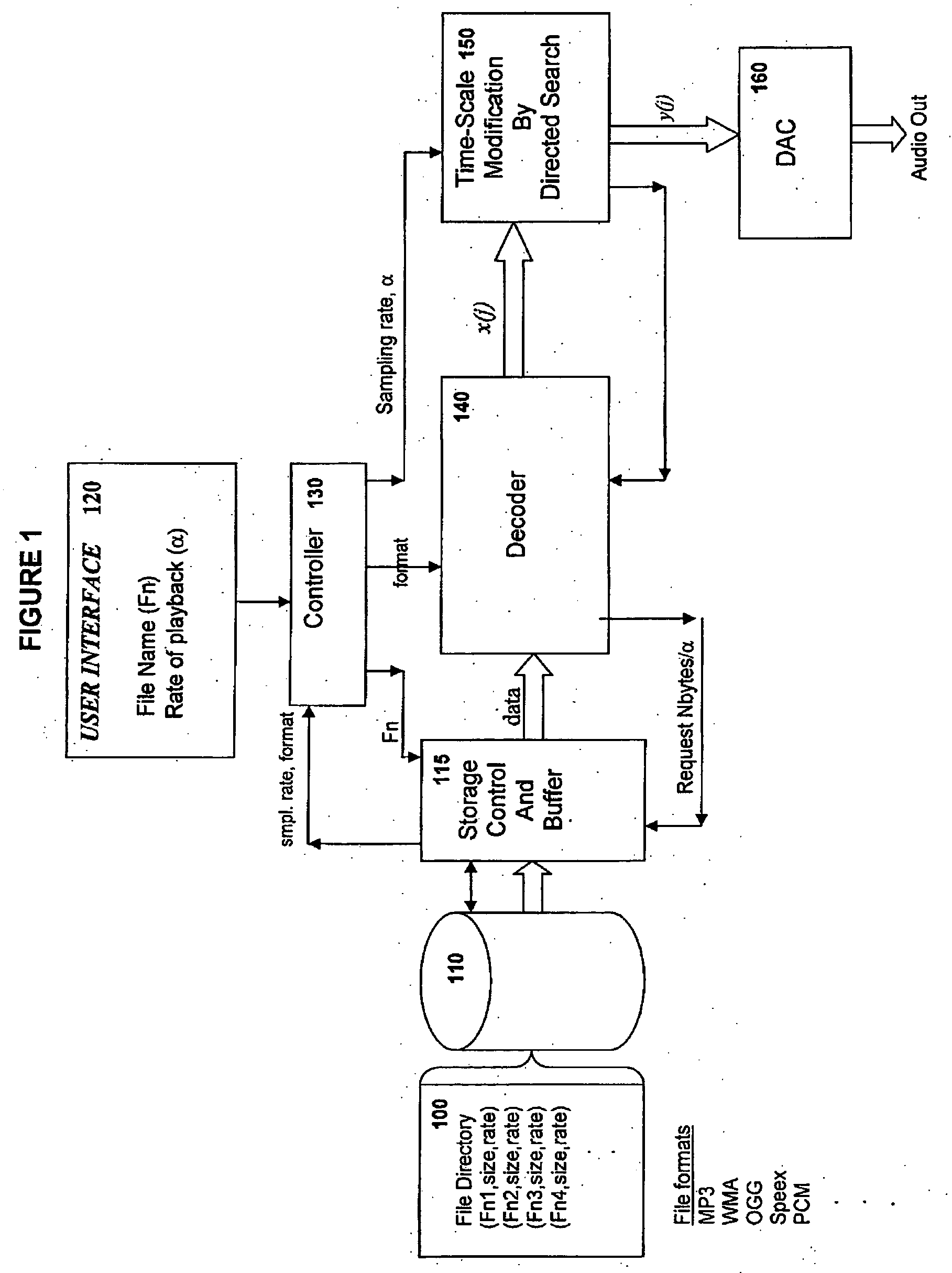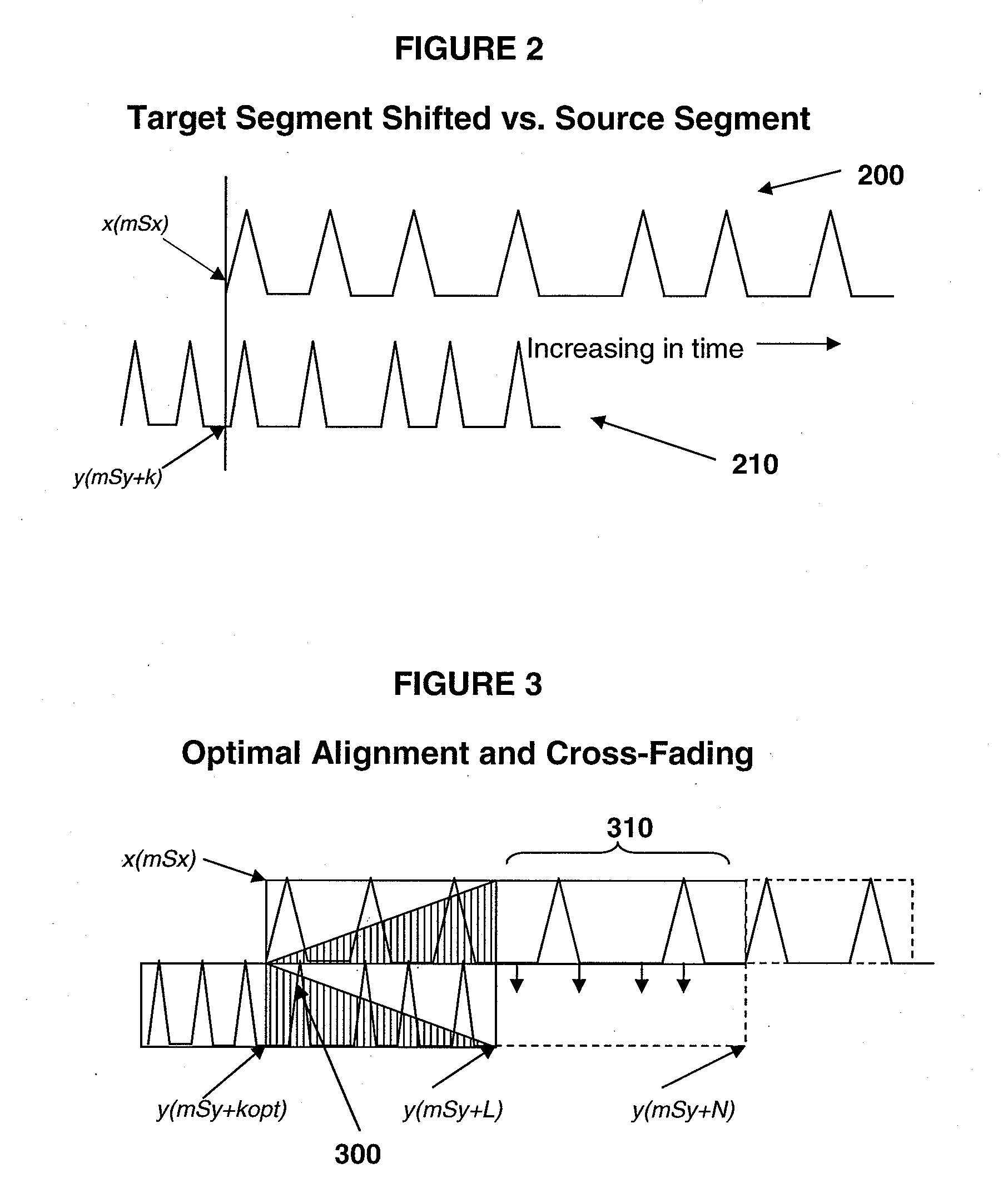Fast Time-Scale Modification of Digital Signals Using a Directed Search Technique
a time-scale modification and directed search technology, applied in the field of digital signal processing, can solve the problems of low-cost, consumer-oriented devices, and inability to generally have the computational power of personal computers in small, low-cost, and low-cost devices, and achieve the effect of fast and computationally efficient time-scale modification
- Summary
- Abstract
- Description
- Claims
- Application Information
AI Technical Summary
Benefits of technology
Problems solved by technology
Method used
Image
Examples
Embodiment Construction
[0035]For clarity, the disclosure of this invention is in three sections. The first section describes a system for an embodiment of the invention. The second provides a detailed derivation of new formulas for r(k) and sl(k), that allow the use of the technique we call Directed Search. The third section discloses the details of the TSM method using Directed Search and includes a glossary of relevant parameters and functions.
I. DETAILED DESCRIPTION OF AN EMBODIMENT OF THE INVENTION
[0036]FIG. 1 illustrates a system in which the TSM module is embedded in a simple real-time architecture. It is to be understood that the real-time aspects of FIG. 1 are exemplary only and that the TSM module may also be part of other embodiments. It is to be further understood that although various components are illustrated in FIG. 1 and in FIG. 4 as separate entities, each illustrated component represents a collection of functionalities, which can be implemented as software, hardware, firmware or any comb...
PUM
 Login to View More
Login to View More Abstract
Description
Claims
Application Information
 Login to View More
Login to View More - R&D
- Intellectual Property
- Life Sciences
- Materials
- Tech Scout
- Unparalleled Data Quality
- Higher Quality Content
- 60% Fewer Hallucinations
Browse by: Latest US Patents, China's latest patents, Technical Efficacy Thesaurus, Application Domain, Technology Topic, Popular Technical Reports.
© 2025 PatSnap. All rights reserved.Legal|Privacy policy|Modern Slavery Act Transparency Statement|Sitemap|About US| Contact US: help@patsnap.com



